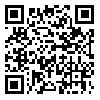Volume 18, Issue 2 (2018)
QJER 2018, 18(2): 181-208 |
Back to browse issues page
Download citation:
BibTeX | RIS | EndNote | Medlars | ProCite | Reference Manager | RefWorks
Send citation to:



BibTeX | RIS | EndNote | Medlars | ProCite | Reference Manager | RefWorks
Send citation to:
jabbari A, Renani M, Dashtban Farooji M, Akbari N. Designing a Timeless Voting Model in the Political Market Using the Economic Market Mechanism. QJER 2018; 18 (2) :181-208
URL: http://ecor.modares.ac.ir/article-18-15077-en.html
URL: http://ecor.modares.ac.ir/article-18-15077-en.html
1- Assistant professor of Economics , amir_jabbari@znu.ac.ir
2- Professor of Economics,
3- Assistant Professor of Economics, Bojnourd University
4- M.A. Student of Economics, Zanjan University
2- Professor of Economics,
3- Assistant Professor of Economics, Bojnourd University
4- M.A. Student of Economics, Zanjan University
Abstract: (5930 Views)
In their economic analysis of democracy and its institutions, economists often use methods which are very similar to market analysis. When methods and techniques of economic analysis are used in studying democracy, one of the interesting results is that the performance of the political market is similar to that of economic market. The timelessness of money as private good is an important condition for the optimal resource allocation mechanism in the economic market. In this regard, this article uses the mechanism of the timelessness of money in the economic market in order to allocate advantages and benefits to citizens in the political market optimally. To do this, a monetary model similar to the political market sphere is designed using the concept of Anthony Downs’s (1957) rational voter hypothesis, and applying the idea of Paul Samuelson's (1958) monetary model within microeconomic theory of consumption. Using such model, the timelessness and storability of votes can investigated. The results show that the timelessness of money leads to a superior allocation, Pareto optimality and improvement in the optimal situation of voters.
Keywords: Economic market, Political market, Timelessness of votes, Downs’s rational voter hypothesis, Samuelson's monetary model
Article Type: Original Manuscript |
Subject:
Economics
Received: 2016/11/26 | Accepted: 2017/08/29 | Published: 2018/06/24
Received: 2016/11/26 | Accepted: 2017/08/29 | Published: 2018/06/24
Send email to the article author
| Rights and permissions | |
 |
This work is licensed under a Creative Commons Attribution-NonCommercial 4.0 International License. |







